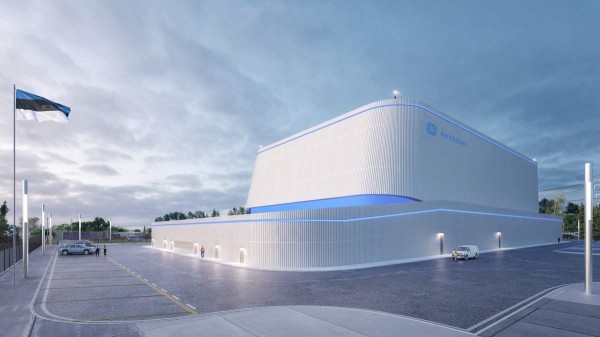
As the initial construction is underway near Darlington, ON Canada, Fermi Energia saw the reactor as the most suitable for construction in Estonia out of the three offers received. Based on the design and construction experience in Darlington, the planning, design and construction of the Estonian nuclear power plant can also be gradually started.
“The BWRX-300 is in principle a boiling water reactor, which is used and well known by many European countries, including Finland and Sweden. However, the specific reactor model is much smaller than the ones used in the nuclear plants of our northern neighbors, which allows greater safety, lower cost, and shorter build time. At the same time, it is possible to rely on the experience of neighbors and offer the consumer clean electricity at an affordable and stable price,” said Kalev Kallemets, CEO of Fermi Energia.
“We are honored that our small modular reactor technology has been selected by Fermi Energia to help Estonia fulfill its energy security and climate goals,” said Jay Wileman, President & CEO, GEH. “This technology selection further validates the BWRX-300 as the leading SMR solution. By leveraging a unique combination of existing fuel, plant simplifications, proven components and a design based on an already licensed reactor, the BWRX-300 offers cost-competitive zero-emission generation in a meaningful timeframe.”
The construction process of Canada’s first-of-a-kind reactor has already started – Estonia would not be the first to build a new reactor. At the same time, for example, one of Europe’s largest energy companies, PKN Orlen, has announced that it wants to build 74 small modular reactors in Poland, at least some of which would be BWRX-300. “The choice of BWRX-300 by Polish, Swedish and other European companies gives assurance that the competence and supply chain of the selected technology will be sufficient in Europe,” commented Kalev Kallemets.
Advertisement / Reklaam
Advertisement / Reklaam
BWRX-300 is a new generation boiling water reactor with a power generation capacity of 300 megawatts. The highest safety is ensured by the ability to ensure the cooling of the residual heat of the fuel with a large volume of water above the reactor, without electric power or human intervention. However, the letter X in the name of the model indicates that it is the tenth generation of GE Hitachi boiling water reactors – the technology is reliable. A new important development is faster construction of the power plant, using steel modules instead of concrete poured into the cast.In addition to GE Hitachi, the three technology providers that reached the final round of Fermi Energia’s technology selection were the British company Rolls-Royce and the American company NuScale.
“There are dozens of new small modular reactors in development around the world – each of them is somehow different. Some developers are experimenting with more exotic technologies that will take a long time to reach market maturity, while others use tried and tested, functional and safe solutions. Estonia cannot be too bold an experimenter with its first nuclear power plant. It also sets a number of practical criteria for the choice of technology, which after thorough consideration fell to GE Hitachi,” explained Marti Jeltsov, Chief Technology Officer of Fermi Energia.
In order to build a nuclear power plant in Estonia, a decision of the Riigikogu to enable nuclear energy in Estonia is needed. Also, the initiation of a special national plan to find a suitable location for the plant, as well as the development of nuclear energy legislation are required. “We have analyzed all the work ahead and consider it realistic to produce reliable, clean and affordable nuclear energy in Estonia by Christmas 2031, which should also be in the interest of society and the country’s climate goals. Understandably, this goal requires a serious effort from both the state and Fermi Energia,” added Kallemets.
Advertisement / Reklaam
Advertisement / Reklaam

